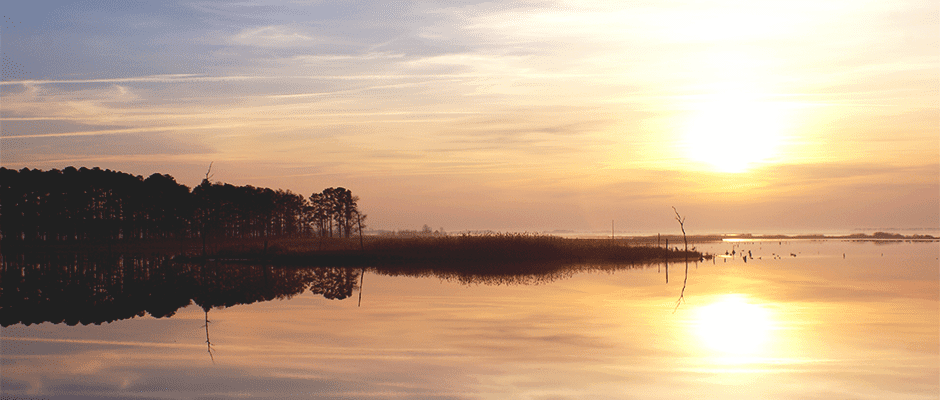Share this article
USFWS coastal conservation responds to climate change
At the Chesapeake Marshlands National Wildlife Refuge Complex, two members of The Wildlife Society are working to monitor and respond to the ecological impacts of climate change.
Supervisory wildlife biologist Matt Whitbeck and biological technician Miles Simmons work for the U.S. Fish and Wildlife Service in the Complex, which encompasses the Blackwater, Glenn Martin, Eastern Neck, and Susquehanna National Wildlife Refuges along the Chesapeake Bay. Their recent work is investigating ecological changes associated with a changing climate – particularly, rising sea levels. Research conducted by the U.S. Geological Survey suggests that sea levels are rising along the Chesapeake Bay at rates three to four times faster than the global average. Based on the current rate of sea level rise, the marshes at the Blackwater Refuge could be entirely inundated within the next 75 years.
The Complex hosts a wide variety of waterfowl and shorebirds, as well as terrapins, snakes, and small mammals – many of which rely on saltwater marshes and other unique habitats found in the Complex. However, sea level rise can alter habitats on which several wildlife species in the Complex depend, raising concerns that biodiversity at the refuges may be at risk of decline as habitat conditions change. That’s why Whitbeck, Simmons, and other biologists are hard at work at the Complex conducting vegetation monitoring and other surveys to better understand how the ecosystem is changing and responding to a changing climate.
In June, the team also completed a large living shoreline project at the Glenn Martin refuge that will slow coastal erosion, benefiting both wildlife and people. Coastal marshes in the Complex, and efforts to conserve them, play an important role in mitigating the impacts that large storms have on coastal communities. For example, when Hurricane Sandy hit the Chesapeake Bay region in 2012, marshes in the Complex absorbed floodwaters and lessened shoreline erosion, buffering communities from storm impacts. This prevented further infrastructure damage in coastal communities like those surrounding Smith Island, where the Glenn Martin refuge is located. In total, the Department of the Interior invested over $750 million in restoration efforts following Hurricane Sandy, including efforts to restore and strengthen coastal marshes like those found in the Complex.
The work of Whitbeck, Simmons, and others in the Complex will begin to better explain how these refuge ecosystems are responding to a changing climate. By understanding these changes, scientists will be able to work proactively to ensure that the Chesapeake Bay remains resilient against climate change in order to benefit communities of both wildlife and people.
This story was originally featured by USFWS as the first in a five-part series called People Behind a Stronger Coast, which highlights individuals working to strengthen and restore coastal ecosystems as we approach the fourth year since Hurricane Sandy hit the Atlantic Coast.
Header Image: Blackwater National Wildlife Refuge. ©Ray Paterra/USFWS








